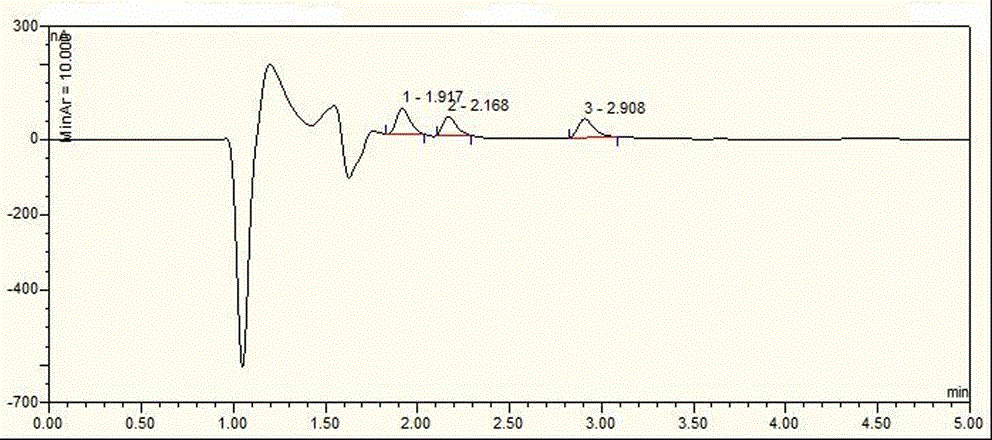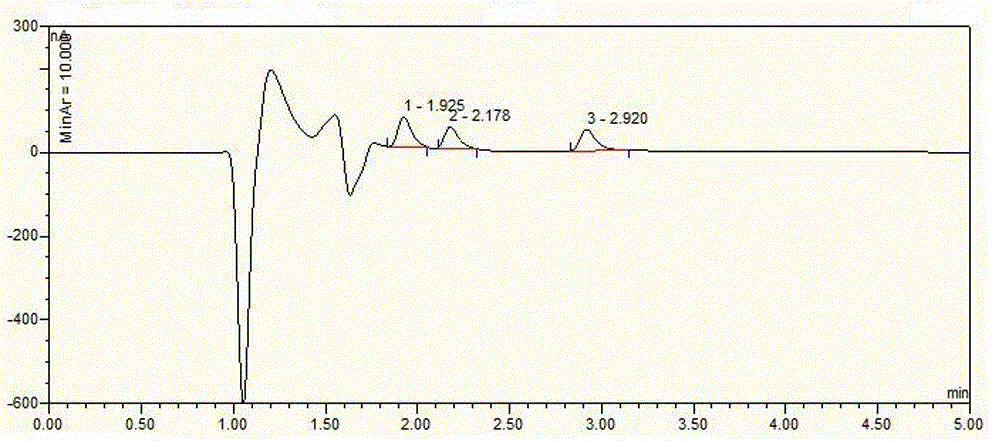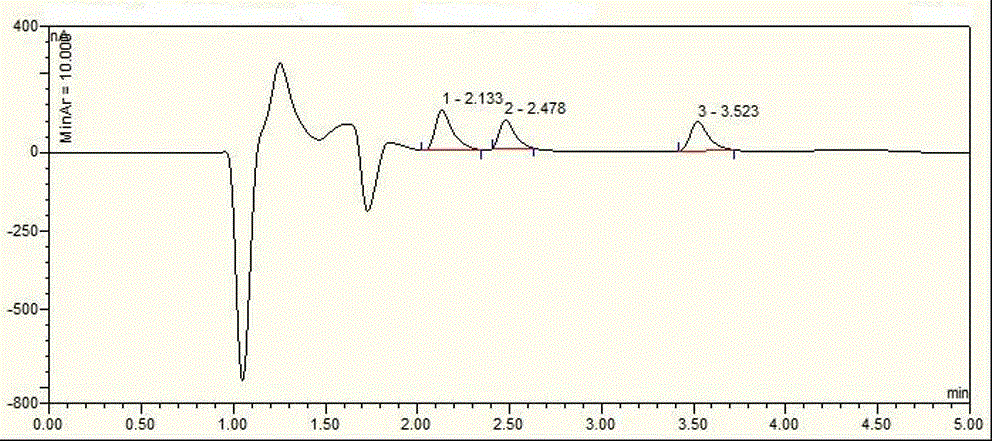Reagent for HPLC detection of concentration of catecholamines in sample
A technology for detecting catecholamines and samples, which is applied in the direction of measuring devices, instruments, scientific instruments, etc., can solve the problems of deviation of test results and consumption of EDTA, and achieve the effects of cost reduction, accuracy improvement and detection accuracy
- Summary
- Abstract
- Description
- Claims
- Application Information
AI Technical Summary
Problems solved by technology
Method used
Image
Examples
Embodiment 1
[0048] Example 1 Reagent for detecting the concentration of catecholamines in a sample by HPLC
[0049] The reagent that is used for HPLC detection catecholamine concentration in the sample, described reagent comprises mobile phase, is used for the activated alumina of sample pretreatment, 0.2M HCl solution and 0.01M EDTA-2Na solution:
[0050] In the mobile phase of every 1000ml, 4.1g of anhydrous sodium acetate, 0.05g of EDTA-2Na, 70~90ml of acetonitrile,
[0051] Sodium octane sulfonate 0.08~0.10g, glacial acetic acid 7.5ml, the rest is ddH 2 O, pH 4.0-4.3. Wherein the volume of acetonitrile is preferably 80ml, the amount of sodium octanesulfonate is preferably 0.08g, and the pH value of the mobile phase is preferably 4.0. When the sample is urine, the reagent also includes concentrated hydrochloric acid for sample pretreatment. The concentrated hydrochloric acid preferably has a mass fraction of 37.5% HCl solution.
[0052] In addition, the reagents may also include ca...
Embodiment 2
[0056] Embodiment 2 blood pretreatment method
[0057] (1) Add 20-25 mg of activated alumina (purchased from Sigma-Aldrich) into a test tube, and then add 400 μl of Tris-HCl buffer.
[0058] (2) Add 5 μl of 0.01M EDTA-2Na solution to 0.5ml of blood at a volume ratio of 100:1, centrifuge at 3500rpm for 10min, collect plasma, and store at 4°C until use.
[0059] (3) Add the plasma collected in (2) into the test tube in (1), shake it for 5 minutes, then centrifuge at 3500rpm for 10 minutes, and remove the supernatant;
[0060] (4) Add ddH to the test tube 2 O washing, then shake for 2 min, centrifuge at 3500 rpm for 3 min, remove the supernatant, repeat 4 times, then centrifuge at 3500 rpm for 5 min, and dry the water in the test tube with a cotton swab;
[0061] (5) Add 200 μl of 0.2M HCl to the test tube, shake for 5 minutes, centrifuge at 3500 rpm for 10 minutes, take 10 μl of the supernatant as the sample solution, and prepare for testing on the machine.
Embodiment 3
[0062] Example 3 Urine Pretreatment Method
[0063] (1) Add 20-25 mg of activated alumina (purchased from Sigma-Aldrich Company) into a test tube, and then add 400 μl of Tris-HCl buffer.
[0064] (2) Add 20ml of hydrochloric acid solution with a mass fraction of 37.5% to 0.2ml of urine at a volume ratio of 1:100, and at the same time add 2μl of 0.01M EDTA-2Na solution at a volume ratio of 100:1, centrifuge at 3500rpm for 10min, and collect supernatant.
[0065] (3) Take 200 μl of the supernatant collected in (2) and add it to the test tube in (1), shake it for 5 minutes, then centrifuge at 3500 rpm for 10 minutes, and remove the supernatant;
[0066] (4) Add ddH to the test tube 2 O washing, then shake for 2 min, centrifuge at 3500 rpm for 3 min, remove the supernatant, repeat 4 times, then centrifuge at 3500 rpm for 5 min, and dry the water in the test tube with a cotton swab;
[0067] (5) Add 200 μl of 0.2M HCl to the test tube, shake for 5 minutes, centrifuge at 3500 rpm f...
PUM
| Property | Measurement | Unit |
|---|---|---|
| volume | aaaaa | aaaaa |
Abstract
Description
Claims
Application Information
 Login to View More
Login to View More - Generate Ideas
- Intellectual Property
- Life Sciences
- Materials
- Tech Scout
- Unparalleled Data Quality
- Higher Quality Content
- 60% Fewer Hallucinations
Browse by: Latest US Patents, China's latest patents, Technical Efficacy Thesaurus, Application Domain, Technology Topic, Popular Technical Reports.
© 2025 PatSnap. All rights reserved.Legal|Privacy policy|Modern Slavery Act Transparency Statement|Sitemap|About US| Contact US: help@patsnap.com



